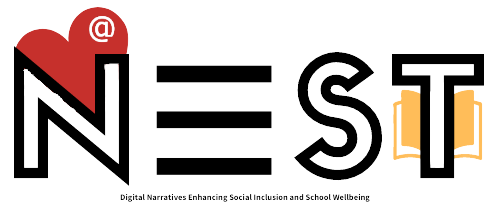12 RESPONSES
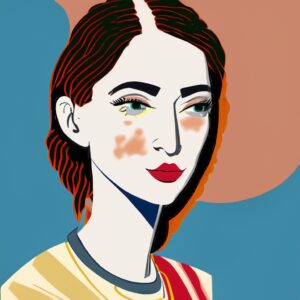
My name is Anabela Carvalho. I’m from Portugal and work for the EFCastro as a partner in the NEST project. I’m a portuguese teacher and I’m the school projects’ coordinator.
Dialogical Literary Tertulia
– promote interest in reading;
– develop egalitarian dialogue’s techniques;
– provide access to universal literature.
All students
In dialogue with the students, the book is chosen, as well as the frequency with which the gatherings will be held. It is also agreed the number of pages that will be read by the students, autonomously. In the class of the tertulia, the students make their registration to read and to make the comment of the chosen part. All students participate enthusiastically, even those who have more difficulties. These gatherings are part of the Includ-Ed Project.
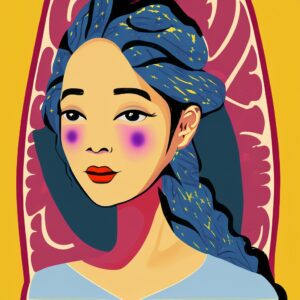
Isabel Ribeiro, EPA
Storytelling for Social Change
To empower students to address social issues through storytelling.
To enhance students’ critical thinking and problem-solving skills.
To encourage empathy and activism.
To develop students’ digital media and storytelling abilities.
High school students in European social studies and media studies classes.
“Storytelling for Social Change” is an innovative educational program that engages students in creating digital narratives to raise awareness about social issues and inspire positive change in their communities. Methodology: Topic Selection: Students research and select a social issue that they are passionate about, such as environmental conservation, social justice, or mental health awareness. Story Development: Students develop digital narratives, which can include short films, documentaries, podcasts, or interactive websites, that address their chosen social issue. They work in teams or individually. Research and Interviews: To create compelling narratives, students conduct interviews, gather data, and research the chosen social issue. They may also collaborate with local organizations or activists. Digital Storytelling Tools: Students use digital storytelling tools and software to create their narratives. They learn to edit videos, record podcasts, or design interactive websites. Community Screening: The completed narratives are screened or shared with the school community, local organizations, or at public events to raise awareness about the social issues and promote discussions. Context: “Storytelling for Social Change” is typically implemented in high schools in European countries, aligning with curriculum goals related to social studies, media studies, and citizenship education. Results: Empowerment: Students feel empowered to address social issues and make a positive impact in their communities. Critical Thinking: The project encourages critical thinking and problem-solving as students research and develop narratives. Empathy and Activism: Students develop empathy for those affected by social issues and often become advocates for change. Media and Storytelling Skills: Students improve their digital media production and storytelling abilities.

Andreia Baptista, Project Manager, EPA
EcoExplorers – Outdoor Nature Adventures
To connect students with the natural world and foster a sense of environmental stewardship.
To enhance students’ knowledge of local flora, fauna, and ecosystems.
To promote physical activity, teamwork, and problem-solving skills through outdoor exploration.
To encourage creativity and communication by documenting their outdoor adventures.
Elementary school students, particularly those studying environmental science or interested in outdoor activities.
The EcoExplorers project is an immersive outdoor educational initiative designed to ignite students’ passion for nature, ecology, and conservation through hands-on exploration and documentation. Methodology: Nature Excursions: Students embark on regular outdoor field trips to local parks, forests, wetlands, or nature reserves. These excursions are led by educators with expertise in ecology. Species Identification: During the excursions, students learn to identify local flora and fauna, including plants, birds, insects, and animals. They use field guides, binoculars, and magnifying glasses. EcoQuest Journals: Each student maintains an “EcoQuest Journal” to document their findings, observations, and sketches. They record details about the species they encounter and their behaviors. Team Challenges: Students engage in team challenges, such as creating mini-ecosystems, building wildlife habitats, or solving environmental puzzles. Community Presentations: Periodically, students present their findings to the school community through presentations, displays, or even a nature fair. Context: The EcoExplorers program is implemented in elementary schools located in regions with rich biodiversity. It aligns with the curriculum’s focus on environmental education and outdoor learning. Results: Increased Nature Engagement: Students develop a deep connection with the natural world and a sense of responsibility for its conservation. Scientific Knowledge: Students gain hands-on experience in ecological fieldwork and species identification. Physical Activity: Outdoor exploration promotes physical health and well-being. Teamwork and Communication: Collaborative challenges enhance teamwork, communication, and problem-solving skills.
The EcoExplorers project combines outdoor education, science, and creativity to provide a holistic learning experience.
Educators may need access to natural areas, field guides, and equipment for outdoor excursions.
Student presentations and displays promote community involvement and showcase the value of outdoor education.

Ana Ribeiro, Teacher and Head of the International Department, EPA. Graduated in Languages and Modern Literatures and in Teaching of English and Portuguese. Post-Graduation in School Administration. International project coordinator – Head of the International Department at AEVA and its Vocational School. Responsible and coordinator of all European projects developed at school since 2001.
The Storytelling Schools Methodology
To improve students’ comprehension and communication skills through storytelling.
To enhance creativity and imagination.
To foster a love for reading and literature.
Primary and elementary school students.
The Storytelling Schools Methodology is an approach that encourages teachers to use storytelling as a central pedagogical tool. Teachers select age-appropriate stories and actively engage students in the process of retelling and creating their own stories. This practice is typically implemented in primary and elementary school classrooms. Methodology: Teachers choose a story relevant to the curriculum. Students read and discuss the story. Students retell the story in their own words. Students create their own stories using elements from the original narrative. Context: This methodology is widely used in primary education to improve reading comprehension and language skills. It has been particularly successful in improving literacy rates among young learners. Results: The Storytelling Schools Methodology has shown improved comprehension, vocabulary development, and creativity among students. It also fosters a deeper appreciation for literature and storytelling.
This methodology is often used to engage reluctant readers and promote a love for storytelling.
It can be adapted to various subjects and age groups within primary education.
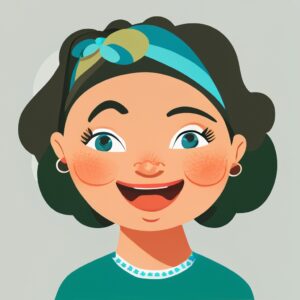
My name is Luisa and I`m a teacher at Agrupamento de Escolas Ferreira de Castro. I`m a computer teacher and head of the robotics club
Robotic Club
The project aims to promote various skills in order to achieve the goals set out in the Profile of Students Leaving Compulsory Schooling, in an environment that fosters learning. The aim is for the participating students to continue to develop the skills they acquired in the 1st cycle and to become ambassadors for programming and robotics at the school.
5ºth grade students and Special Needs Students
It is an extracurricular space where various types of learning are promoted, based on the motivation to learn about programming and robotics. The focus is on “learning to play” through robotics projects that favour the appreciation and appropriation of learning.

My name is Ana Duarte. I`m from Portugal and work for the EFCastro partner in the NEST project. I`m a teacher for children with Special Needs and I`m the Coordinator for Special Education and also in charge for the NEST Project
The apprentices / Os aprendisábios
The aim of the project is for students to achieve autonomus reading, writing, mathematics and other skils (artistic, social, …) through the individualization and experiences
Students from 7 to 10 years old
The Aprendisábios workshops are aimed at all primary school pupils covered by learning support and inclusion measures. As well as others who, at some point in their school career, need to take part in the sessions, in order to empower themselves with reading, writing and maths skills and appropriate new knowledge that will enable them to participate actively and effectively socially and academically.

Francesca Ferrini – I am an experienced and qualified educator usually working within community-based education and with children with fewer opportunities. I was the co-founder of what is now one of the most important Italian Foundations working for the wellbeing of Children. I am the coordinator of a community centre held by this Foundation and I am part of the Association Eureka (www.euroeureka.eu) with which I do work in innovative practices for primary and pre-primary education as well as adult education domain.
VIDUKIDS _Stop Motion for Early Math Learning!
Foster play-based pedagogy and a dynamic learning concept Develop video-based methods for early mathematics education
Preschool children age 3-6 years.
Early childhood educators/teachers.
Preschool children’s parents.
The general public
ViduKids is a project funded by the Erasmus+ program, aiming at using video narratives creatively with children for making them familiar and interested to mathematical concepts. The core idea of ViduKids is that children themselves become an active part of the video production process. In this process, using creative thinking, mathematical content will be reworked and visualised. In this approach: Children will playfully discover mathematical concepts like space, numbers and shapes Children will document their ideas and discoveries themselves on video Other children will be engaged as viewers of the videos Children will be given ample opportunities for self-reflection Early childhood educators will support the children appropriately; in particular provide ideas and examples, and technical support The ideas will be developed further with early childhood educators from other EU countries Early childhood educators will be the interface to reach the learners and the project will take great care to address and include them appropriately. The project has produced several results, all visible in the website. Video co-created by children and teachers Case studies Self -learning course for teachers Booklets reporting the whole experience and its impacts on teachers and children

Rosa Mateus, Special Education Teacher, Agrupamento de Escolas Ferreira de Castro – Sintra – Portugal. Teacher with 35 years of service, who throughout her career has had different experiences, primary school teacher, school management/direction and special education.
Deliciously inclusive
Promote Inclusion and diversity;
Promote solidarity and sensitivity towards others;
Interact in different social and emotional contexts;
Promote teamwork;
Develop sensory stimuli;
Promote interdisciplinarity;
Stimulate written/oral language and arithmetic skills;
Work on attention and concentration;
Apply hygiene, health and safety rules;
Develop autonomy, work habits and a sense of responsibility;
Develop motor skills and psychomotor coordination.
All school students.
2 periods per week with the participation of several groups according to invitation/registration and students from CAA – Arco-Íris, participating in the creation and tasting of sweets and menus created by students. – Project integrated into the Integration discipline, with a group of students, during the 3rd cycle with recipe research, budgets, participation in the making/preparation of sweets and menus, among others. – Sale of prepared products and sales in the school lobby. It provided practical activities, giving students the opportunity to learn in a practical way, applying various subjects, such as mathematics, Portuguese and others; – Developed basic cooking skills and developed social skills as it was a collaborative activity – Regarding the degree of satisfaction, it was quite positive. Students participate actively and enthusiastically in all activities carried out, with the objectives being complied with in full.

Gulsevil
English
15-19
Students from 7 to 10 years old

”You Brng the Rest”
”You Brng the Rest”
Developing cirtical thinking, developing creatvity, making empathy
13-14 years old students
The class is splitted nto groups of 3-4. The students are handed out a paper with an introducing sentence of story.Each group is supposed to write the story until a certan pont , not to end. The story goes through all the groups and comes to an end.Then the whole story is read aloud in front of the class and students shares their opinions about the development of the story.
The practice is sutable for classes with 15-16, not crowded ones.
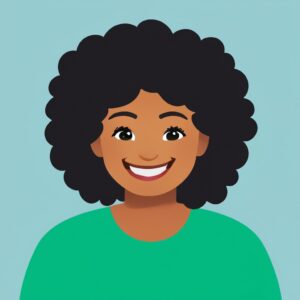
Alexandra Sucena, teacher, Instituto Duarte de Lemos, Águeda/ Portugal
Madlibs – Engaging students in stories
– Developing students’ creativity
– Developing students’ writing skills
– Developing student’s’ reading skills
– Developing complex intellectual skills
– Developing Meta-cognitve skills
– Promoting imagination
– Developing grammar awareness
10-16
The students are given a sheet of paper with number and parts of speech. They have to complete it. Later on, they are given a worksheet with a story with gaps. They have to fill in the gaps with the word they have written in the parts of speech worksheet. Then they read their story aloud to the class. Usually these stories are very funny and sometimes make no sense.
Students get really engaged in this activity and learn a lot.
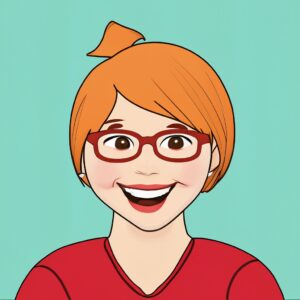
Name: Ana Claudia henriques; Role: Teacher Organización: Instituto Duarte de Lemos City: Águeda Country: Aveiro
Teacher
Engage students in critical thinking by storytelling strategies
Year 7 to 9
I am using narrative/ storytelling methodology in MFL classes in order to teach similarly to mother tong acquisition. Narrative strategies allows teachers to create content that reinforces linguistic skills as well cultural and critical thinking.

Ivana Finocchiaro, high school teacher for students with special needs in Città della Pieve (Italy) and trainer on Visual Thinking strategies
Visual Thinking Strategies in classrooms and museums
The promotion of key and transversal competences, such as:
– Visual literacy, i.e. the ability to attribute meaning to images, starting from their
subject identification to an interpretation on a contextual, metaphorical and philosophical level.
– The spirit of collaboration, improved by the judicious conduct of class discussions in
response to open questions posed by the teacher/facilitator.
– Communication skills, focused not only on the expression of concepts, but also on the
reasoned formulation of opinions and observations.
– Critical thinking, i.e. the ability to ask analytical questions, argue one's own opinions,
explore new points of view, recognise the complexity of an object of study.
Students aged from 5 to 110 years old
Visual Thinking Strategies, an inclusive methodology based on the use of visual media (from paintings to sculptures, photographs and installations) as a thinking tool. Students, within a classroom or a museum setting, explore the stories contained in each image through a debate carried out by a facilitator, who will use open-ended questions. This methodology, combined with collateral activities involving creative writing, is extremely efficient to improve the skills mentioned above in the learning objectives.

Michela
Poster for Peace
Raise awareness of the 2030 Agenda and consider Goal 16 and thus promote a peaceful and inclusive society.
Pupils aged 11 to 13 in secondary school
The project began with an explanation and meaning of the term peace and all its extensions. War zones were viewed by identifying them on the planisphere, historical periods and works of art were examined, and the children were asked to make reflections on the topic. Pupils made “digital posters” using special programs such as Canva and Stop Motion. Pupils, with the help of teachers, worked on the images and ways of making them using acrostics, slogans and personal thoughts inspired by the theme, including in the different languages they studied in their schooling.
The construction of a digital product that also combines storytelling with images engages and excites students who learn while having fun.

“Nest is a project funded by the Erasmus+ Small-scale Partnership in School Education” – Project Number 2021-2-IT02-KA210-SCH-000051373
“The views expressed on this website are those of the authors and commission and its representatives shall not be held responsible
for any use that may be made of the information contained on this website”.
